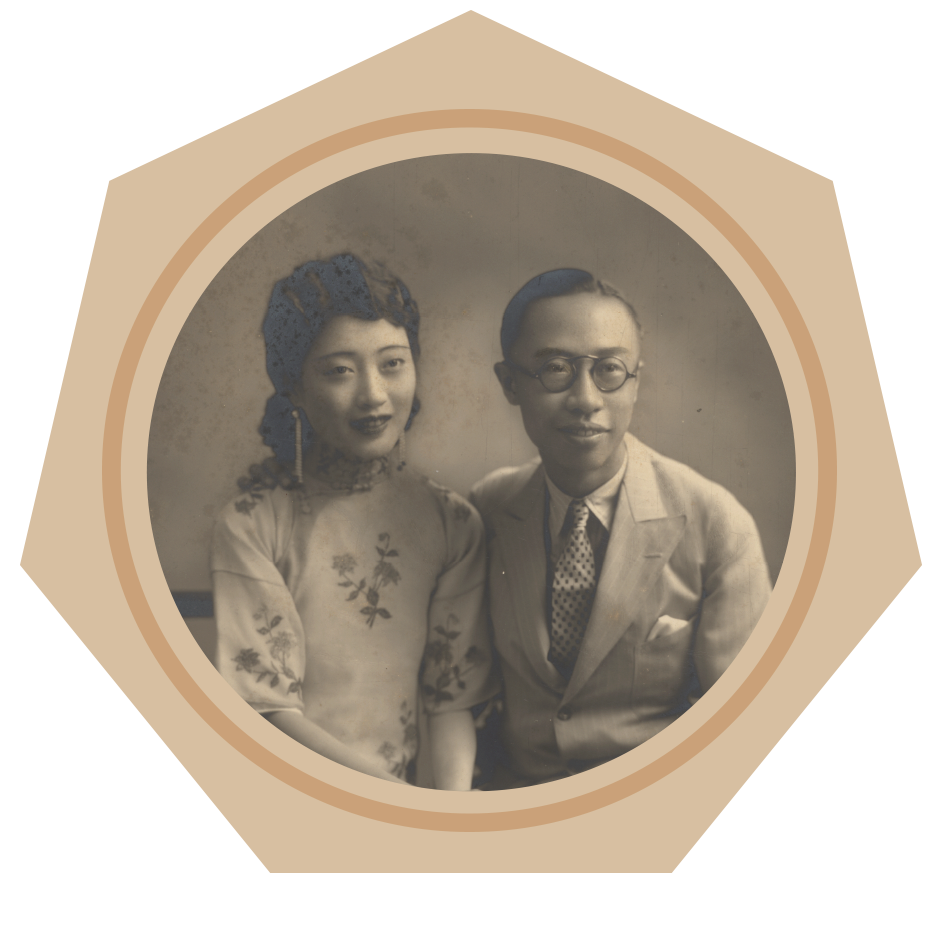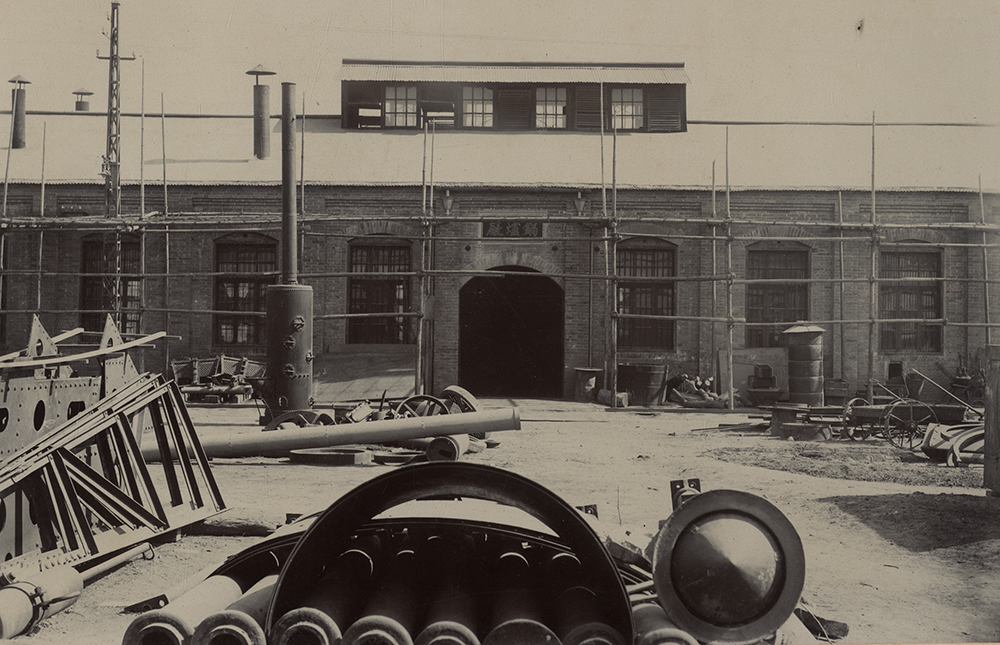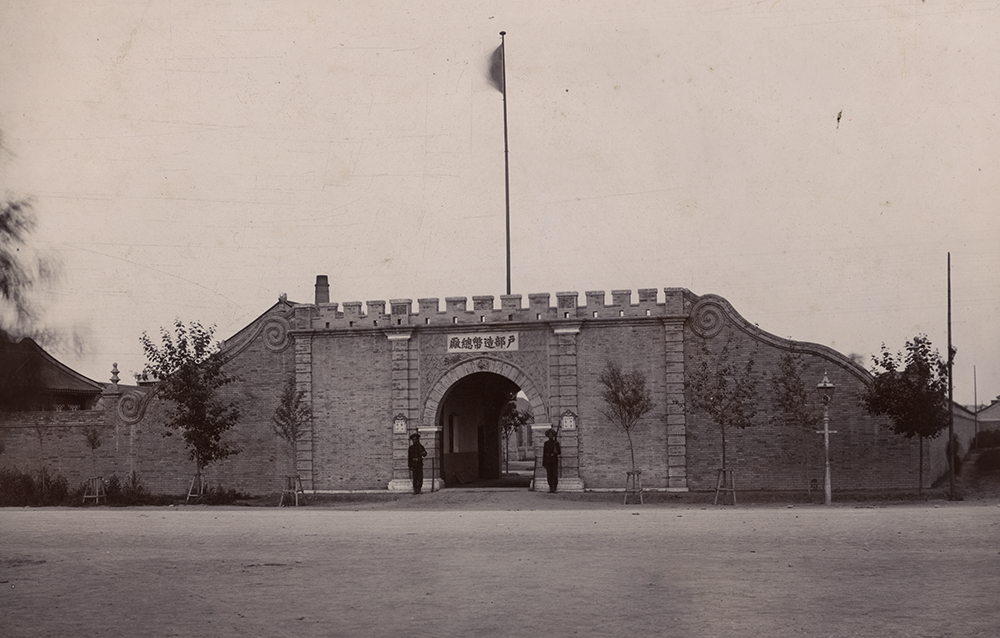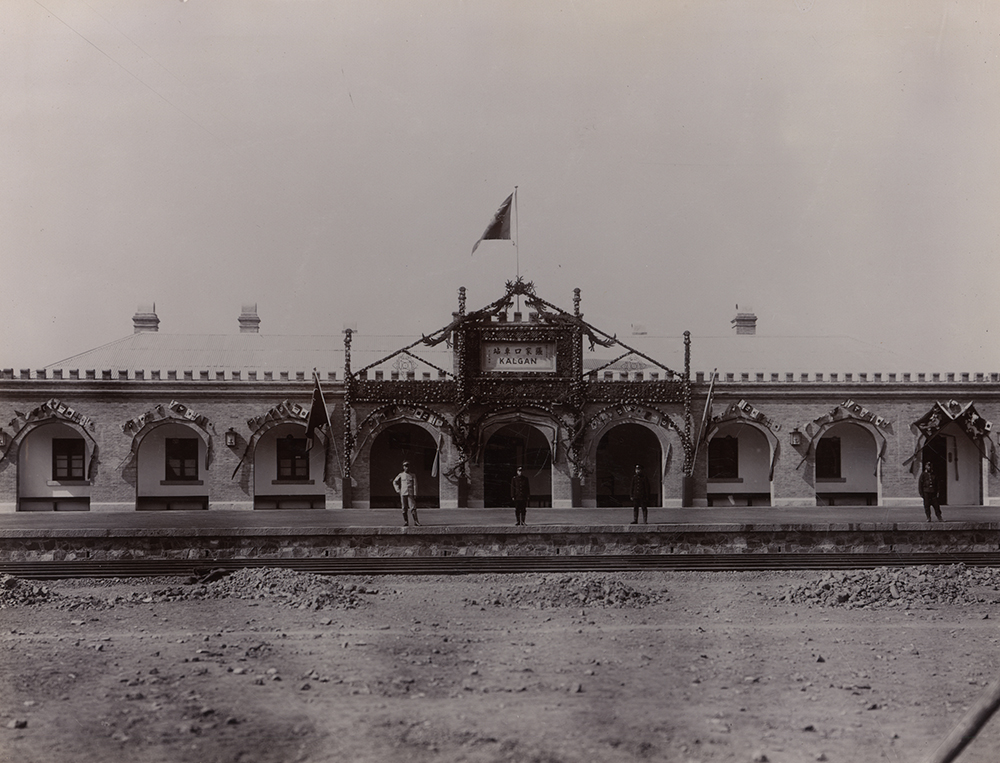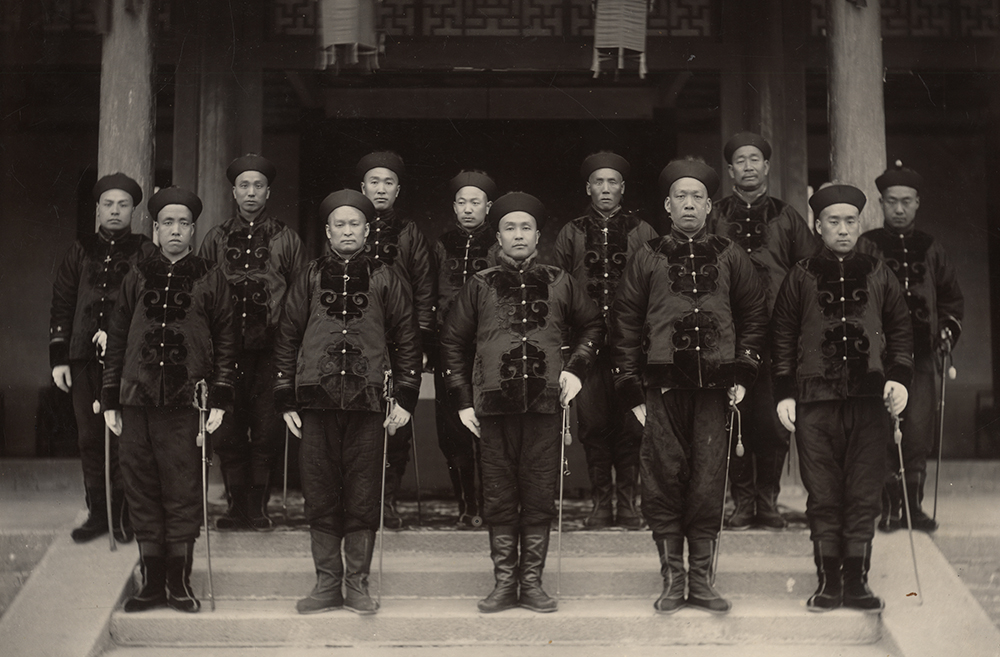After photography had been introduced into China in the late Qing, photographs were applied to documenting the reform initiatives implemented by the court. Previously, Qing officials when reporting affairs to the throne were required to submit textual memorials, supplemented by illustrations, if necessary, to make up what could not be explicated by the written word. Starting from the late Qing, photographic studios or photographers were hired to assist officials in the preparation of photographic attachments to their memorials on such critical matters as the auditing of state-run enterprises, the supervision of military exercises, and the inspection of naval defenses and construction projects.
The images shown in this section are those of official inspections taken during the reigns of Guangxu and Xuantong (1875-1911), covering a wide array of themes, from state-commissioned modern factories, schools offering Western-style education, newly built naval vessels, and military exercises by the modernized New Army to the construction of the Jing-Zhang Railway. The selection presents a late Qing China on the historical turning point implementing a series of reforms in various areas like industrialization, education, military buildup, and transportation.
The Beiyang Machinery Manufacturing Bureau
- Xuantong reign, Qing dynasty
- Courtesy of the Palace Museum, Beijing
The Beiyang Machinery Manufacturing Bureau was erected in the 6th year of the Tongzhi reign (1867) in Tianjin by Chong Hou (1826-1893), the Grand Minister of Three Trading ports. It was initially known as the General Ammunition Machinery Bureau, and the Tianjin Machinery Bureau. In the 9th year of the Tongzhi reign (1870) Li Hongzhang took over the control, and renamed the facility the Tianjin Machinery Bureau, and in the 21st year of the Guangxu reign (1895) the Beiyang Machinery Manufacturing Bureau. It was one of the modernized state-run arsenals, and second in scale to the the Jiangnan Manufacturing Bureau. The Bureau consisted of east and west division, specializing in the production of ammunition, bullets, naval mines, military equipment and vessels. It was burned down by the Eight-Nation Alliance during the Boxer Rebellion in the 26th year of the Guangxu reign (1900), and restored in Dezhou, Shandong, after Yuan Shikai (1859-1916) was named the Governor-general of Zhili in the 30th year of the reign (1904).
The images are taken from the Beiyang Jiqi Zhizaoju Gechang Jiqitu (or Machines of the Beiyang Machinery Manufacturing Bureau and Its Plants), an album of 120 photographs compiled by Zhu En-fu during his inspection of the site as an attachment to his report to the throne. They are selected to provide a glimpse into the state-run military buildup of the late Qing.
Currency Reform
- 1907
- Courtesy of the Palace Museum, Beijing
Since the time of its designation as a trading port, Tianjin had witnessed the influx of a large number merchants and the increasing magnitude of currency circulation, which in turn made the city a financial center in north China. When Yuan Shi-kai was appointed the Governor-general of Zhili in the 28th year of the Guangxu reign (1902), he named Zhou Xue-xi (1866-1947) Director of the Beiyang Government Mint. The Silver Tael Bureau of the Board of Revenue was established the following year, and the latest currency machinery was introduced from the United States, Japan, and Germany. The Bureau was renamed the General Mint of the Board of Revenue in the 33rd year of the Guangxu reign (1907), and it was to become the largest currency production center with the most advanced equipment in the late Qing. The implementation of currency reform and the minting of new money had greatly improved the chaotic situation in local currency circulation. The standardized forms, quality, and weight of the new currency not only improved the credibility of government minting, but also paved the way for new currency policy and the transition from silver tael to silver coin to be implemented in the early Republic.
The Jingzhang (Beijing-Zhangjiakou) Railway
- 1909
- Courtesy of the Palace Museum, Beijing
The Jingzhang Railway was the first railroad in China financed, designed, and built by the Chinese, without any foreign involvement. It was a grand project by the renowned engineer Zhan Tian-you (1861-1919), who completed its construction in four years between the 31st year of the Guangxu reign (1905) and the 1st year of the Xuantong reign (1909). The line was over 200 kilometers in length, from Fengtai in Beijing to Zhangjiakou, constituting an essential gateway to reach Inner Mongolia, Russia, and Europe. The images shown here are selected from the album Jingzhang Lugong Cuoying (or Photographs of the Jingzhang Railway Construction) which comes in two volumes with 178 photographs, depicting scenes along the railroad, including laborers at work, various types of locomotives, the inspection of the construction, and the festivities held in celebration of the opening of the railway. The photographs were taken by Tan Jin-tang (1876-1915) of Xiangshan, Guangdong province, from the 9th to the 10th months in the 1st year of the Xuantong reign.
The Training of the New Army
- 1905
- Courtesy of the Palace Museum, Beijing
The New Army was a newly formed army that embraced Western standards and equipment. Formed during the Guangxu and Xuantong reigns (ca. 1895-1911), it was so named that it could be distinguished from the old armed forces based on the Eight-Banner system and the Green Standard Army, as well as the Xiang and the Huai armies. The New Army was equipped with foreign weaponry and trained by foreign military officers. When the Russo-Japanese War broke out in the 31st year of the Guangxu reign (1904), Yuan Shi-kai, the Governor-general of Zhili and the Minister of Beiyang, petitioned for the expansion of the Beiyang Army and formed 36 divisions nationwide. Yuan first set up three standing divisions in Zhili, including the areas of Qianan, Machang, and Baoding. In the 2nd month of the 31st year of Guangxu's reign, the Qing court assigned the Minister of the Military, Chang Geng (1844-1914), along with Xu Shi-chang (1855-1939) to inspect the Army. In the 2nd year of the Xuantong reign (1910), the government organized an inspection of all divisions of the Beiyang Army, known as the "Gengshu Military Exercise," in order to examine their military strength and status of preparation.
Events that took place in the inspection and exercise mentioned above were photographed by the divisions and made into exquisite photo albums for the review of the empress dowager and the emperor. Albums entitled Beiyang Lujun Baoding Yizhen Ji Jingzhen Bingcao Zhaopian (or Photographs of the Military Exercise of the Baoding and the Capital Divisions of the Beiyang Army) and Beiyang Lujun Qianan Machang Liangzhen Bingcao Pian (or Photographs of the Military Exercise of the Qianan and Machang Divisions of the Beiyang Army) are examples of the inspection in the 31st year of the Guangxu reign, while Gengshu Jiaoyue Diyizhen Cuoying (or Photographs of the First Division during the Gengshu Military Exercise), Gengshu Jiaoyue Dierzhen Cuoying (or Photographs of the Second Division during the Gengshu Military Exercise), and Jiaoyue Lujun Disanzhen Cuoying (or Photographs of the Third Division during the Gengshu Military Exercise) were assembled in the 2nd year of the Xuantong reign. These albums directly reveal the differences in military training and equipment between the New Army and the traditional forces.

